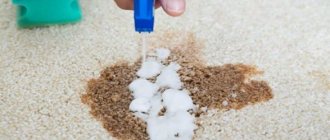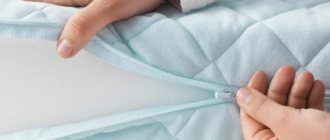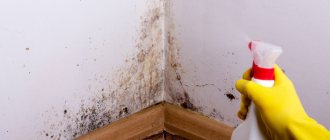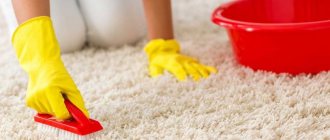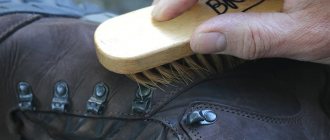Mold appears on the carpet, what should I do? How to remove fungus from carpet and how to remove it without harming the carpet. What folk remedies will help not only get rid of black spots, but also permanently eliminate the unpleasant smell of dampness.
Today we’ll look at popular ways to clean a carpet yourself without dry cleaning. We will share real experience in solving the problem, there is even a video on the topic.
Mold is a type of fungus whose spores are constantly in the air in an inactive state. If favorable conditions arise, these spores are instantly activated and infect the surface most suitable for further growth.
Such conditions may include:
- high level of humidity in the room,
- poor ventilation system,
- lack of regular ventilation.
One of the most favorite places for fungus is carpeted floors, so today we’ll look at the question of how to remove mold from carpet, rugs and rugs.
Mold can develop on carpets and rugs if the material is very wet and the owners do not dry it thoroughly enough. Rugs in bathrooms, where the humidity is constantly high, are also at risk of mold growth.
Mold in the carpet: causes and consequences
Why does your carpet stink? Most likely, something similar happened to him:
- They accidentally poured water on it, then wiped it with a rag, but didn’t dry it properly. The carpet remained damp on the floor.
- It was washed (no matter at home or in the wash). The pile was wet to the very base, but did not dry quickly enough. Normally, drying time should not exceed several hours. If the carpet takes longer than a day to dry, it is almost guaranteed to become infected with mold.
- We did a home cleaning and got the lint excessively wet. It did not dry immediately or not at all.
In such cases, ideal conditions are created in the thickness of the carpet for mold to settle and multiply. It first infects the fibers of the base (there, as a rule, the humidity is higher), then it reaches the pile. The first days you may not even notice anything special. And then a musty smell and even dark spots appear.
Mold in the carpet is mixed colonies of various microscopic fungi, as well as putrefactive bacteria. They feed on fibers, gradually decomposing them. Hence the unpleasant smell. Over time, if nothing is done, the microbes will “over-etch” the carpet so much that it will begin to crumble and disintegrate right under your feet.
But the loss of your favorite carpet is not the worst consequence of these processes. Mold is also dangerous to your health. It can cause allergies, pneumonia, and intoxication. Of course, it all depends on how many microbes there are and how long you breathe this air. But you shouldn’t put off solving the problem, because such a carpet is a time bomb. It has been proven that more than 300 types of molds contain allergens. This is an almost guaranteed allergy for anyone who lives in the same room with mold!
What are the health risks of a strong carpet smell?
Increased moisture is the main cause of mold formation in carpets. If water is spilled and not dried, the irreversible process of formation of a recognizable odor begins. Two days in a wet state is a sufficient period for the process of microbial reproduction to begin. On the first line of impact is the base, which is the deepest layer. The pile dries out much faster, but is subject to the detrimental influence of the microflora of the lower layer. The most important thing is that if you notice the above signs, especially the appearance of dark stripes or spots, do not let everything go.
What does this mean:
- Microscopic organisms, which we define as mold, settle in the fibers and begin to use them as a food source. If you leave the situation unattended, the carpet will literally turn into rags in just a couple of years.
- Each of the millions of microscopic spores appears during the life of a mold fungus. The latter become a source of a terrible odor, settle on the skin, and penetrate the respiratory tract. The consequence is allergenic reactions. In advanced situations, dangerous skin diseases, asthma, and damage to the kidneys and liver develop.
- There is a high probability of deterioration, even to the formation of bacteria, they are called putrefactive bacteria. All these factors create a special “bouquet” of stench. They get rid of this type of carpet damage in a similar way.
Eventually:
- It is absolutely unacceptable to live in such a room. We need to fix the problem or throw away the carpet.
- It is useless to eliminate only the smell. We need to remove germs. After this, the following cleaning operations are carried out.
The main rule for removing unpleasant odors
There is no need to fight the smell, you need to destroy the mold. If you try to simply air the carpet or spray it with fragrance, it will not work. Even good washing and the use of effective sorbents will not help. If the fungus remains in the pile or base, the smell will return very quickly. Therefore, your first task is to destroy the mold itself. And only after the product has been completely disinfected can the fight against odor residues begin. This way you will get the desired result - a clean, fresh and safe carpet.
Indestructible fungus: why is it so difficult to remove?
If you've ever tried to remove mold from wood, cement, or painted surfaces, you know what a problem it is. Black plaque can be washed off and painted over countless times, but it appears again in the same place. The same thing happens with stains on carpets, furniture, and clothes.
The thing is that visible mold is only a small part of the fungal colony. Basically it hides in the thickness of the material. There, the mold branches out its microscopic “roots”, creates a densely intertwined network of mycelium and feeds on the substrate, gradually destroying it. Therefore, over time, the affected plaster and wood crumble, and the moldy carpet decays and crumbles.
Moreover, the fungus may disappear for a while while you dry and air the affected product. But as soon as conditions become favorable, he will come to life again. Mold reproduces best at air humidity above 95%, but in drier climates it does not die, but only slows down its growth. Fungal spores tolerate very difficult conditions without losing viability. They are light, spread through the air, settle on new, uncontaminated surfaces, and enter the human body.
Therefore, if the fungus has already settled in your carpet, you need to fight it seriously. Surface treatment will not help, since the bulk of the colony will remain in the thickness of the pile and fibers of the base. The mold must be completely destroyed - this is the only way to save the carpet and protect yourself and your loved ones.
How can I remove mold?
The most effective remedies against fungus are fungicides; they are made specifically for this purpose. These are the substances that are used to combat mold on various surfaces. They can also be selected for carpet processing. But many are stopped by the fact that such products are classified as pesticides: you need to take all precautions and strictly follow the manufacturer’s instructions. Moreover, they are not cheap. Therefore, we provide recipes for removing mold using available materials.
These substances are safe and inexpensive, they are easy to find, if not in the kitchen, then in the pharmacy:
- baking soda;
- table vinegar;
- iodine;
- essential oils.
Let's take a closer look at how to use it. But first, some general recommendations for cleaning mold from carpets.
What else can you do against mold?
All the recipes described are designed to destroy the fungus and its odor. But most of the dirt after processing will remain in the thickness of the pile. Therefore, after successfully combating mold, the carpet should be thoroughly cleaned. Just don’t over-moisten it and dry it as quickly as possible. Otherwise, the fungus will come to life again.
And to get a guaranteed result, it is better to contact professionals who will perform dry cleaning right at home and completely remove all mold along with the unpleasant odor. Contact us - we will send cleaners to clean, dry and deodorize your carpet. Departure is possible at any time, and the entire procedure will take several hours. And after this, let mold fungus in your life be found only in expensive cheeses and elite wines.
How to clean?
Whichever product you choose, follow these tips:
- Before treating the entire carpet, test how the product works on a small area. Clean the selected piece according to all the rules and wait until it dries. If the paints have not faded or darkened, and the pile has not changed its structure, you can clean the rest of the area.
- Be sure to dry the item thoroughly after cleaning. Otherwise, mold will settle in the pile again, and all the work will be in vain. For drying, you can use all possible methods - hang the carpet outside (windy and sunny weather is especially good), turn on the fan, raise the air temperature in the room. Be sure to organize intensive ventilation, because moisture does not go away in a closed room.
- In case of severe infestation, it is worth treating not only the carpet, but also the floor underneath it. It should also be thoroughly soaked with a disinfectant solution and dried. But be careful - stains can appear on parquet floors, painted boards and even ceramic tiles from various solutions. Try on a small area first.
- After work, throw away or thoroughly disinfect containers and tools that were used. Otherwise, they will become new breeding grounds for mold and infect other areas of your home.
It should also be understood that mold treatment is not cleaning in the full sense of the word. If the carpet was originally dirty, then old stains and stains will remain on it. In addition, mold particles, even dead ones, retain their allergenic properties. Therefore, after antifungal treatment, it is advisable to still clean the product with a good cleaning agent and only then dry it.
Using special cleaning products
Look for fungicides in city stores. They are usually a spray. Carefully read the instructions supplied with the drug. Follow the recommendations strictly.
How to remove mold:
- You need a mask, glasses, clothes for work.
- It is highly advisable to carry out the treatment outside and do not forget to perform a similar operation in the place where it was lying.
- If work is done indoors, good ventilation is needed. Lock the doors to other rooms.
- To dry, use all suitable devices available in the house. Fan, vacuum cleaner in blowing mode. Raise the heating temperature.
- Using a dry brush, thoroughly clean the base on both sides.
- Use a vacuum cleaner to remove mold residue.
- We use a fungicide spray. Apply deeply from all sides, distributing over the entire area. The main danger is hidden in the thickness.
- Remember that stains are only a symptom, not a cause.
- The drug will work more effectively if you first wipe both the pile and the base.
- Follow the manufacturer's directions. It is usually not necessary to wash off the drug. Just dry it.
- A dehumidifier will help catch any remaining spores.
- Attention, even the slightest traces of fungus are dangerous, so the instruments must be subjected to similar cleaning.
Destroying fungus with vinegar
- Pour the vinegar into a convenient container.
- Take a clean sponge, wet it well and apply vinegar to the pile. Also try to saturate the pile to its full depth, scrub it with a brush if necessary.
- Leave the carpet for 1-2 hours.
- Rinse the vinegar off the carpet. To do this, wet a clean sponge in cold water, wring it out well and wipe it in different directions. Do not rub too hard so as not to mechanically damage the pile.
- Gently wipe the carpet with a dry, clean cloth to speed up drying. Air dry or use a fan.
- Ventilate the room. Be prepared for the faint vinegar smell to linger for several days.
Was this article helpful?
Time:
23:59
Date:
05 Jun 2006
What to do? And why does this happen? I’m already throwing out the second one :( - it can’t be washed off with anything, especially on the side where the suction cups are.
Humidity:( It won’t wash off with anything, and it will turn black again:(
That's why I switched from rubber mats to terry mats, like towels, but for the floor.
Message 20175632. Reply to message 20172297 Author:
Demy Status: VIP
Time:
10:36
Date:
06 Jun 2006
So, the rug is in the bathroom, I mean, not on the floor.
Oh, so in constant contact with water, of course it will turn black. It must either be washed with mold-killing nuclear agents or washed if it is washable. If it has served for a long time, then just replace it.
Poor ventilation in the bathroom. Mold. Alas, you can wave your hand at the rug.
